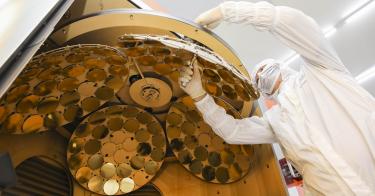China is a near-peer—if not slightly ahead of—the United States in applied technologies such as artificial intelligence (AI) and supercomputers, which require advanced semiconductor chips. The latest round of U.S. export controls covering semiconductor chips and maintenance engineers to China is critical for protecting U.S. economic primacy and curbing—at least temporarily—China’s progress in developing advanced technologies with dual-use purposes. Given the significance of our national security, it is imperative that these controls be properly implemented.
The export control measures are expected to prevent the transfer of highly advanced semiconductor technology that is used for AI and supercomputers. Through China’s civil-military fusion strategy, these could be used to facilitate the development of advanced military platforms. Over the past few years, China’s foreign policy has grown increasingly aggressive. Beijing has built up previously unoccupied land features in the South China Sea, militarized three of its artificial islands, conducted incessant military harassment of Taiwan, and provided support for Russia in the wake of the Kremlin’s invasion of Ukraine.
The Trump administration imposed notable export controls on semiconductor technology transfers to China, prohibiting the sale of certain equipment to China’s largest chipmaker, Semiconductor Manufacturing International Corporation (SMIC). The new export control measures announced on Oct. 7 include additional restrictions on China’s access to semiconductor devices, design, personnel, and equipment for supercomputing and AI applications.
Over the past few decades, China has advanced its domestic semiconductor industry through the acquisition of U.S. technology firms, forced technology transfers, cyber espionage, theft, and recruiting foreign talent. To access the Chinese market, foreign firms have no choice but to acquiesce to Chinese firms’ joint venture and technology transfer requirements.
>>> Exposing China’s Semiconductor Vulnerabilities
Additionally, the Chinese government has spent tens of billions of dollars to buttress its domestic semiconductor industry. In the face of setbacks to Chinese chip makers, including from an earlier round of U.S. export controls in 2020, China planned $1.4 trillion in investments between 2020 and 2025 to support domestic firms’ efforts to develop these technologies. By comparison, the U.S. CHIPS Act includes $52.7 billion for American semiconductor research, development, manufacturing, and workforce development.
The United States can’t compete with China on domestic subsidies, nor should it. But simply encouraging more domestic chip manufacturing and research/development will not stop China’s ongoing use of illegal or unfair tactics to obtain U.S. technology.
American export controls used over the past few years have succeeded in setting back Chinese advanced technology development. SMIC, for example, has been unable to catch up to international competitors due to a lack of equipment and key components for manufacturing its products. Huawei’s business has been hurt severely by U.S. sanctions that have curtailed its access to essential components.
Additional U.S. export controls might encourage foreign companies to shift their chip fabrication from China to other, friendlier destinations. Encouraging such “friendshoring” could complement plans by U.S. allies and partners to play a more significant role in the global semiconductor industry’s supply chain network.
For example, New Delhi is investing $10 billion to incentivize semiconductor manufacturers to produce chips in India. The European Union and Japan are also looking for ways to attract more chip fabrication plants in their territories. Relocating chip fabrications to allies might in some cases be more cost-effective than building factories in the U.S.
>>> Why Taiwan Matters to Beijing
China has integrated itself into the global semiconductor value chain, but the Chinese government is seeking to pursue a greater level of technological autonomy without complying with the rules of the game. This is unacceptable. Maintaining U.S. technological leadership is vitally important. The new export controls, which aim to further restrict China’s access to advanced semiconductor chips and equipment for making them, are welcome but must be followed with diligent action, implementation, and oversight.
Two weeks after the new export controls were announced, during his speech at the 20th Party Congress, Xi Jinping promised to “win the battle in key core technologies.” He spoke of the need to “accelerate the realization of high-level scientific and technological self-reliance.”
A technology war is raging. The Chinese Communist Party is a fiercely determined adversary. To maintain its technological edge, the U.S. needs not only new export control regulations, but the resources, staffing, and Congressional oversight to ensure they are properly implemented and enforced.
This piece originally appeared in 19fortyfive



